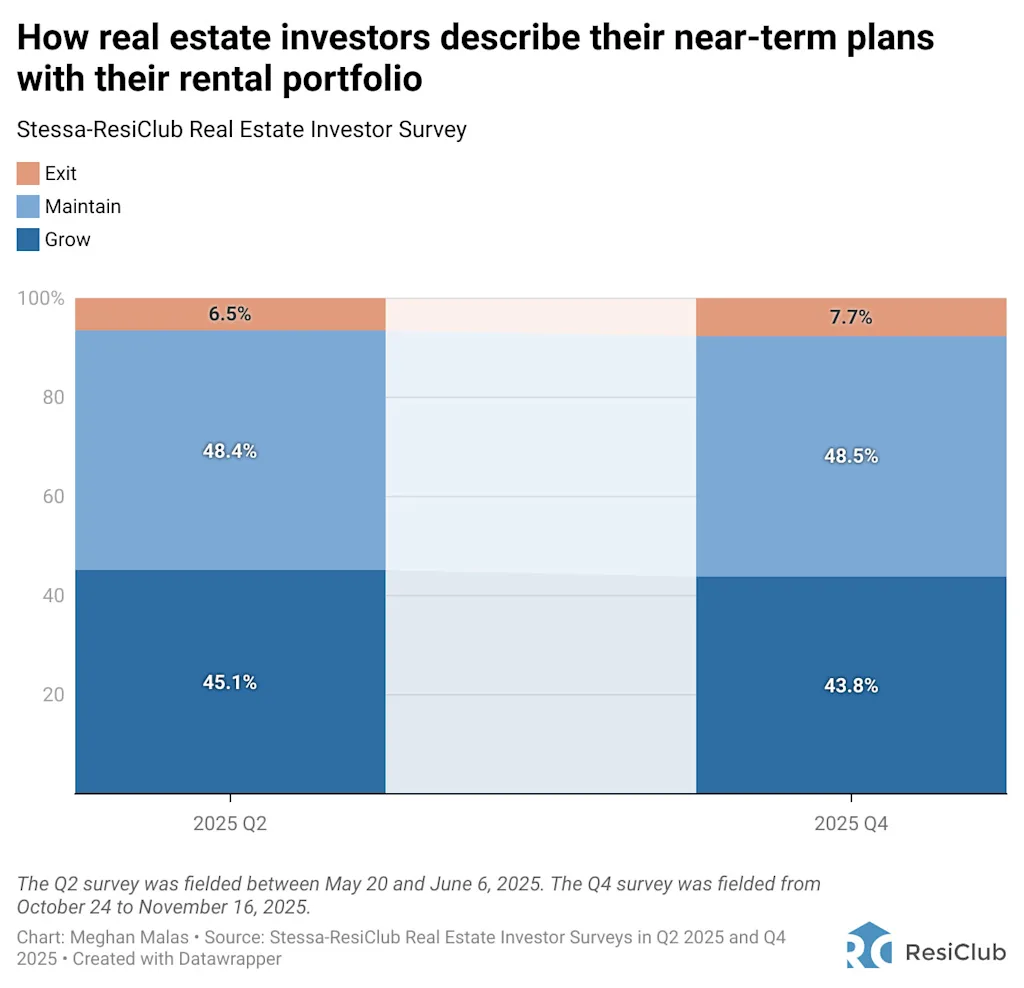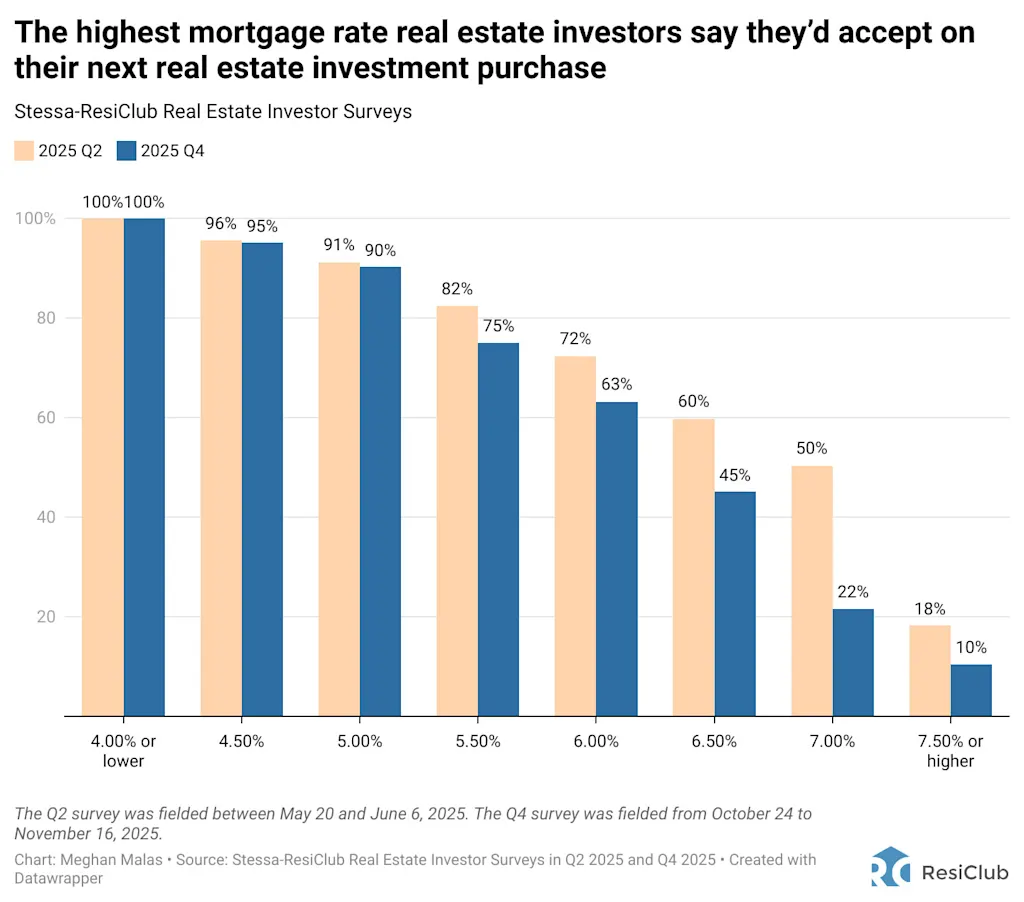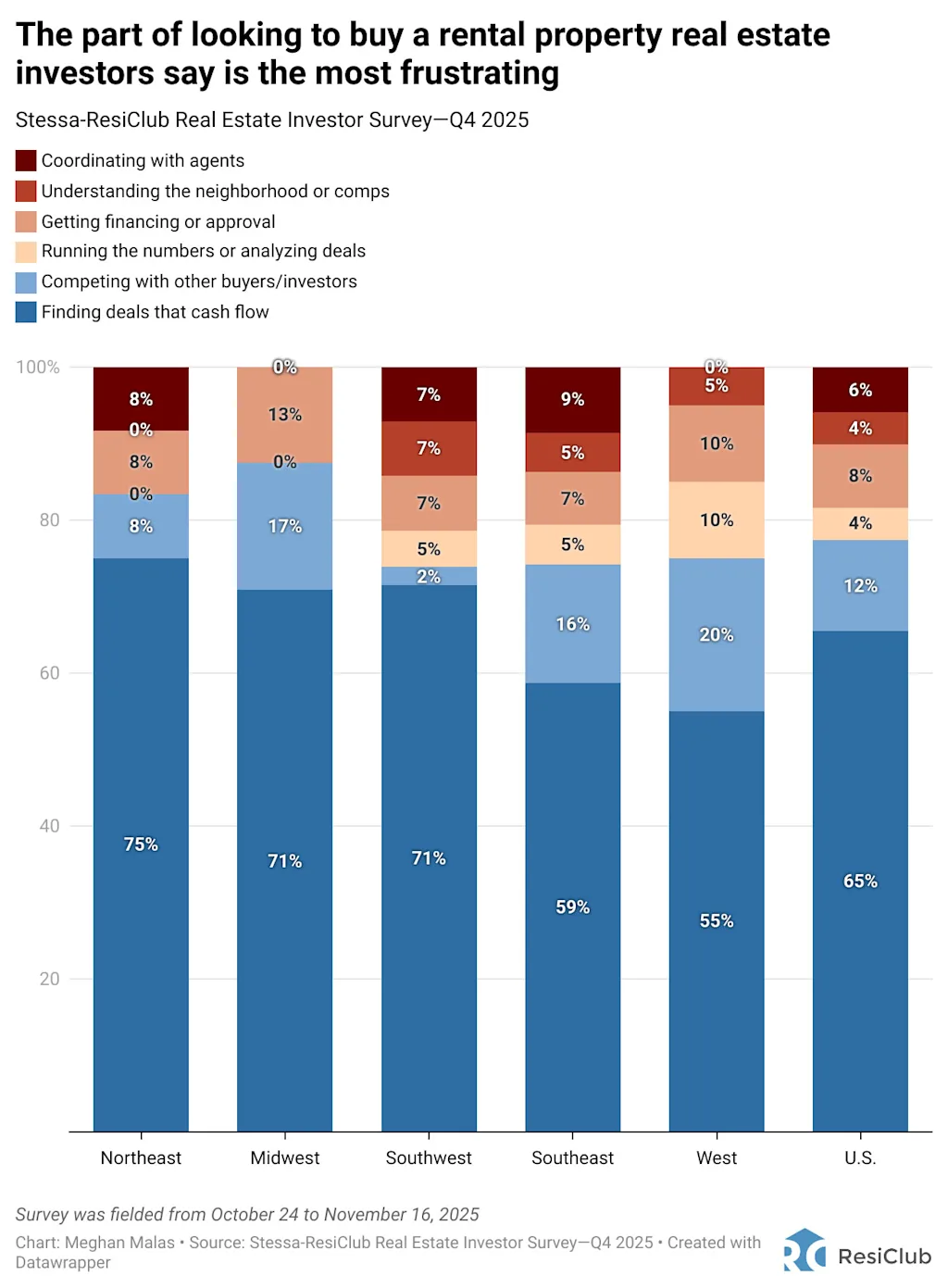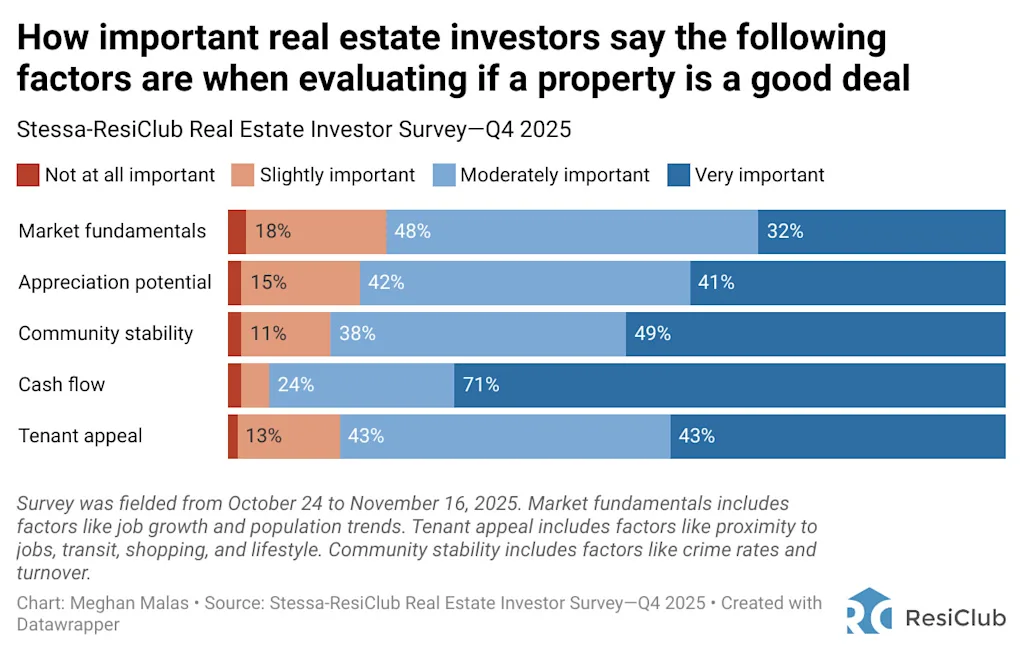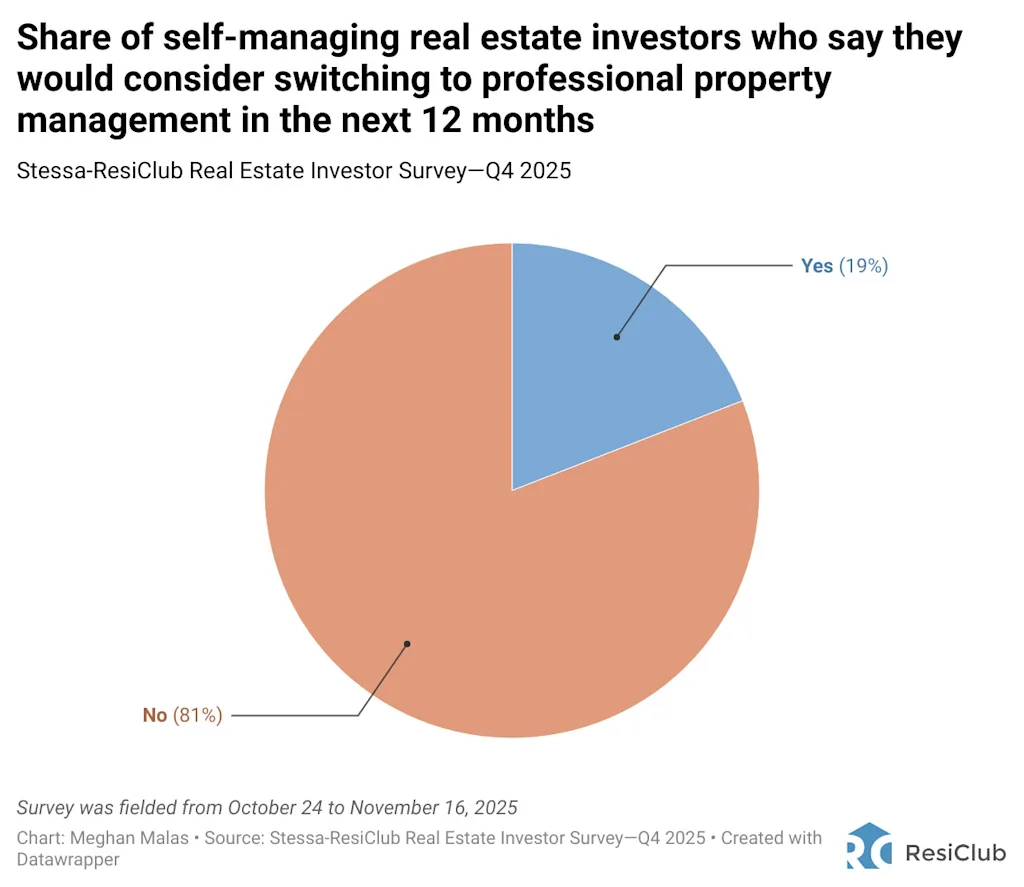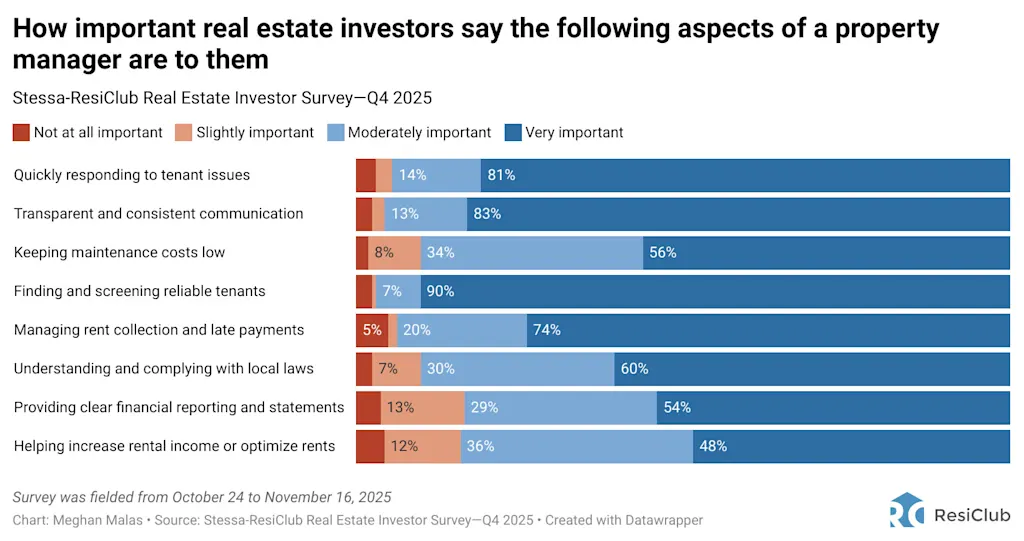
Want more housing market stories from Lance Lambert’s ResiClub in your inbox? Subscribe to the ResiClub newsletter.
Back in May, ResiClub teamed up with Stessa, an asset management and accounting software for real estate investors, to survey real estate investors about how they were navigating the rental market.
Over the past month, we teamed up with Stessa again to survey real estate investors about their market conditions, portfolio plans, and property management strategy.
Investors who own at least one single-family investment property were eligible to respond to the Stessa-ResiClub Real Estate Investor Survey—Q4 2025, fielded between October 24 and November 16. In total, 211 single-family investors/landlords completed the survey.
Here are our topline findings:
- 44% of U.S. real estate investors say they plan to grow their portfolios in the near-term, holding steady from the 45% of landlords that said they plan to grow in the near-term in Q2 2025.
- Two-thirds of real estate investors (65%) say the most frustrating part of the buying process is finding deals that cash flow—that share is even higher among landlords based in the West (75%).
- About six in ten real estate investors (59%) say they are not willing to buy a property unless the cap rate is at least 6.00%.
- 63% of surveyed real estate investors said they’d only accept a mortgage rate of 6.00% or lower on their next purchase.
- 51% of real estate investors say they self-manage their properties.
- 21% of real estate investors say they first look at off-market deal sources.
- 19% of real estate investors who currently self-manage say they would consider switching to professional property management in the next 12 months.
The big picture: Even as nearly half of investors say they want to grow their portfolios, today’s buyers are disciplined—insisting on strong cash flow, cap rates at or above 6.00%, and deals that pencil even with 6.00% mortgage rates. The result is an investor landscape that’s still expansion-minded, but far more selective and operationally focused than in prior years.
Let’s take a deeper look at the results:
